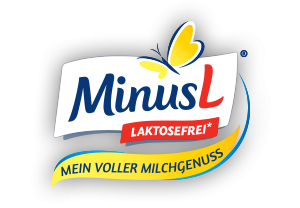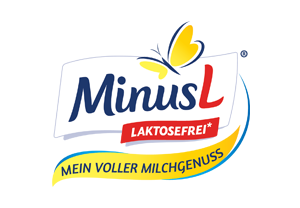
Lactose intolerance
Lactose intolerance is one of the most common intolerances towards a certain type of food. Around 14 million people living in Germany have a lactose intolerance. They develop an incompatibility called an “intolerance” towards milk sugar, known as “lactose”, a natural component of milk. The cause lies in an insufficient production of “lactase”, an enzyme for digestion, by cells in our intestines. Unpleasant digestion problems such as diarrhoea and flatulence are the result.
Lactose intolerance is not an allergy. In the case of an allergy to milk it’s not lactose that leads to problems: it’s the milk protein. It causes an immune reaction which, depending on the severity, can even be life-threatening. That’s why a milk protein allergy and a lactose intolerance must not be confused with each other.
Since lactose, the milk sugar, is naturally found in milk and all products produced from milk such as cream, yoghurt or curd quark, the typical digestive problems occur after consuming dairy products. However, lactose is also frequently used in many other foodstuffs due to its technological attributes. Symptoms of discomfort such as a feeling of fullness and diarrhoea can therefore equally occur after eating bread or sausage products.
There are different forms of lactose intolerance:
- Primary lactose intolerance is congenital, i.e. people are born with it. It leads to a progressive decrease in lactase production in the small intestine. In rare cases this enzyme deficiency can already be perceivable during childhood – but for the most part the typical symptoms are first seen in adults.
- Secondary lactose intolerance is caused by damage to the mucous membrane lining the small intestine. Among other factors, it can arise due to coeliac disease, chronic inflammatory intestinal disorders, intestinal inflammations triggered by medication, or short bowel syndrome. Since the mucous membrane lining the small intestine is able to regenerate itself, in the event of a successful therapy for the basic underlying condition it’s possible that the secondary lactose intolerance will improve and get better again.
What happens when the body displays a lactose intolerance?
Lactose is a so-called disaccharide sugar. To digest it with no problems human beings need a special digestive enzyme: lactase. It is produced in the cells of the mucous membrane lining the small intestine and breaks lactose down into its two monosaccharide simple sugars, glucose and galactose.
If lactase is no longer being produced in sufficient quantities, – which is the case with a lactose intolerance, – the lactose cannot be broken down. It moves along undigested into the large intestine. Intestinal bacteria ferment the incoming lactose. Gases develop in the process (for example carbon dioxide, hydrogen, methane), but short-chain fatty acids are formed, too (for instance acetic acid and butyric acid). The gases formed, primarily carbon dioxide, lead to flatulence.
There are also symptoms of a lactose intolerance that do not involve the gastrointestinal tract, for example dizziness, headaches, fatigue, listlessness and depression.
The lactose and the short-chain fatty acids that have emerged draw water into the large intestine. This influx of water liquefies the intestinal contents, resulting in diarrhoea. The short-chain fatty acids also lead to increased bowel movement. Typical symptoms of a lactose intolerance are, for example, flatulence, diarrhoea, abdominal pain and a feeling of fullness. As a rule they occur half an hour up to several hours after consuming foods that contain lactose.






